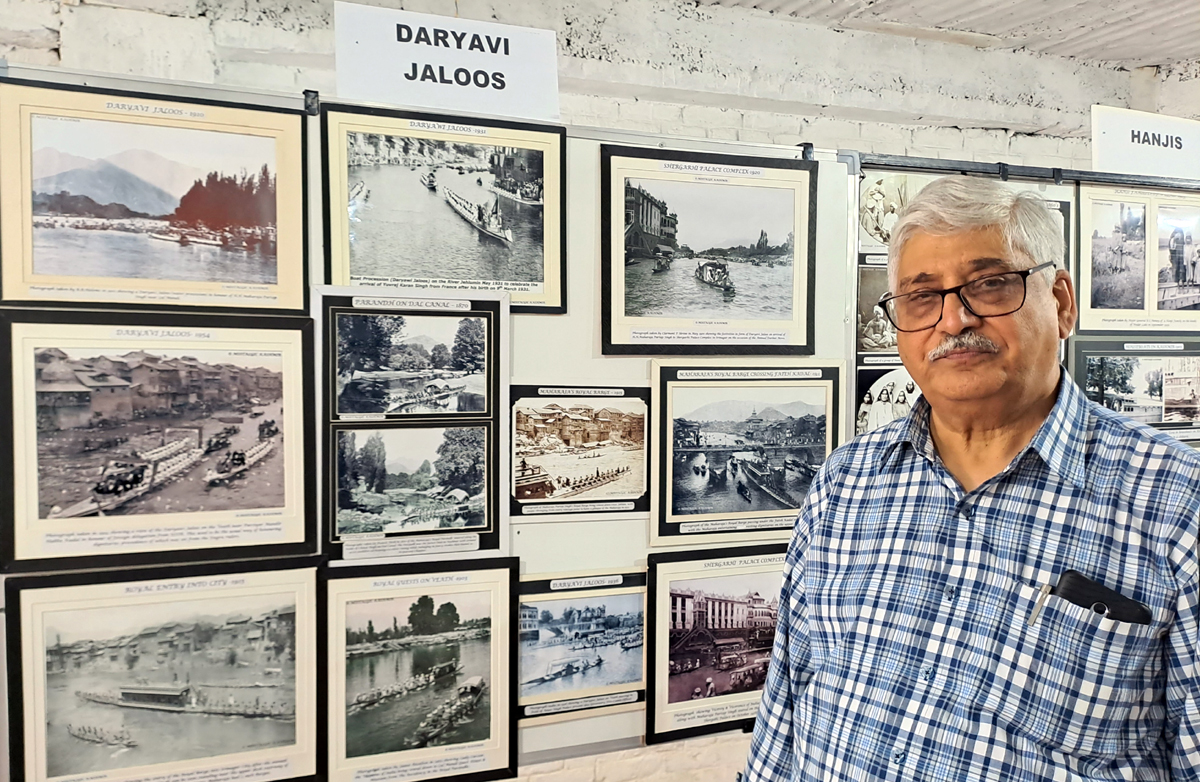
Excelsior Correspondent
SRINAGAR, Aug 8: In a display of historical preservation, a captivating exhibition featuring photographs dating back to the 1850s was unveiled today, drawing the attention of residents who were treated to a glimpse of various facets of life in old Kashmir.
The exhibition, ‘Nostalgic Kashmir’, held in a private space here in Lal Chowk, highlighted the old bridges, hospitals, and river water transport, providing a window into the past that resonated deeply with visitors.
Curated by Engineer Showkat Rashid Wani, a retired Government official, in collaboration with his son, Waseem, the collection boasts an impressive array of over 16,000 photographs.
These photographs offered a unique perspective on subjects such as missionary schools, the early establishment of CD hospitals, daily life routines, and revered mosques. One particularly intriguing aspect was the inclusion of photographs capturing the historic Amarnath Yatra, a pilgrimage dating back to the 18th century.
“The oldest picture dates back to the 1850s, and there are even a few paintings that predate that era, providing insight into specific regions of Kashmir’s rich history,” Wani explained.
“Notably, there is an image from 1857 showcasing the Bijbehara bridge. Altogether, the collection comprises 16,873 photographs, although only 8 per cent of this vast collection is on display due to spatial constraints,” he told Excelsior.
Wani shared that his passion for collecting these photographs spanned three decades, during which he meticulously accumulated snapshots encompassing nearly 40 subjects, effectively spanning the historical spectrum from 1850 to 1950.
“These photographs offer a glimpse into our glorious past. The exhibition holds no commercial motive; there is no entry fee, and it remains completely apolitical. It’s vital for people to understand their origins and appreciate the simplicity of life during those times,” he stressed.
Regarding the acquisition of these invaluable images, Wani mentioned that some were contributed by friends and acquaintances, while a substantial portion was procured from university libraries worldwide.
“My son played a pivotal role in sourcing these images from libraries. He secured most of them by paying the required fees, granting access to the Kashmir section where digital copies of selected photographs were obtained,” he elaborated.
Wani, overwhelmed by the sentimental value of the collection, described it as a treasure trove that brought immense joy and satisfaction throughout the years. He became emotional recounting the devastating loss of around 3,000 photographs due to the 2014 floods.
In a concerted effort to offer the public a window into the past, Wani revealed that the exhibition would run for ten days. He encouraged people to seize the opportunity to witness their glorious heritage firsthand.

